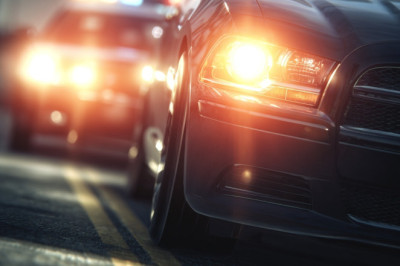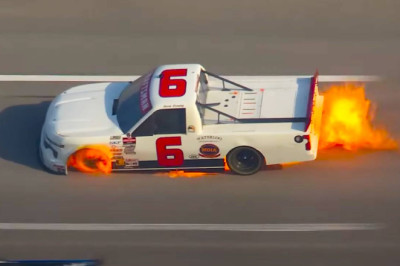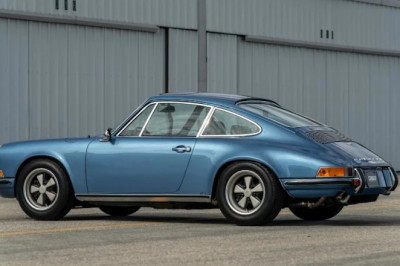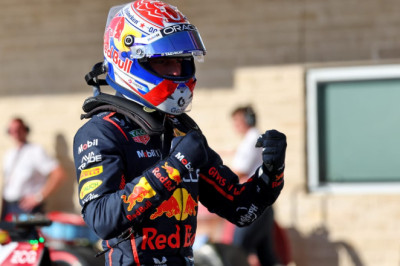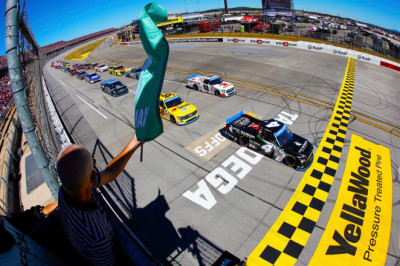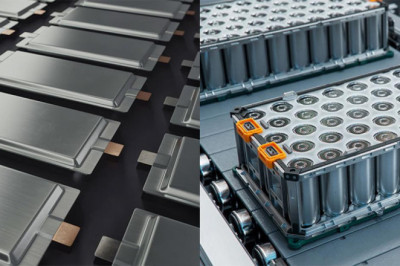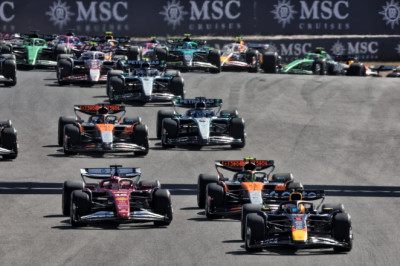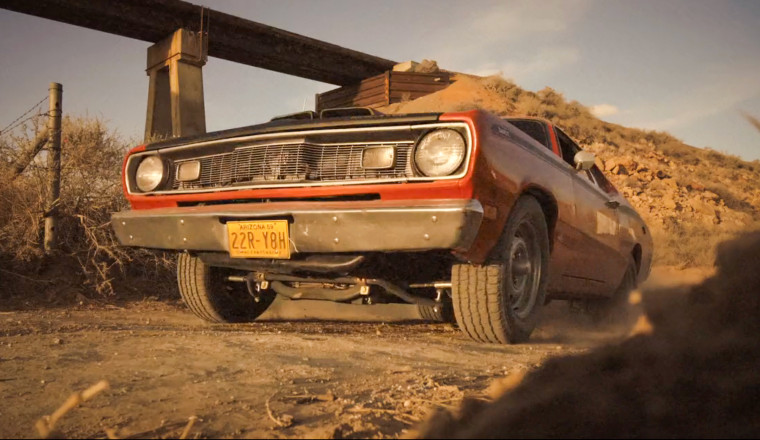
For 20 years, J.J. Abrams couldn’t shake this image: A car approaches a phone booth in a vast desert landscape. The driver stops, gets out, and makes a call to find out his next destination.
Duster was born when Abrams finally began pulling on this thread with co-creator and showrunner LaToya Morgan. Their new HBO Max series takes its inspiration from ‘70s shows like The Dukes of Hazzard and Starsky & Hutch, though with a larger mystery at its center. It’s a little bit buddy cop, and a little bit crime caper, with a splash of conspiracy thriller — and a robust ensemble of period-correct ’70s cars, starting with its vehicular star, a 1970 Duster.
Here’s the setup. Rachel Hilson plays Nina Hayes, the first Black woman to become an FBI agent, a character loosely inspired by Sylvia Mathis, who joined the Bureau in 1976. Josh Holloway plays Jim Ellis, the “best wheelman in the game,” who works for the crime syndicate that Nina aims to take down. Whether Jim likes it or not, Nina’s decided he’s going to help her.
Jim is a ‘70s masculine fantasy inspired by icons like Steve McQueen, but his relaxed swagger hews closer to that of James Garner. Naturally, he drives the high-performance version of the Plymouth Duster, a 340, painted cherry red.
Jim doesn’t just love his Duster — the car is an extension of him, the trusty steed to his Old West outlaw. Morgan explained to Esquire: “This guy thrives on speed. He loves being in tight spots and figuring out ways to get out of them. He’s a trouble magnet in the best way.” Jim’s been driving like a bat out of hell for Keith David’s ultra-cool crime boss Ezra Saxton, who can verify that the man is “magic on wheels.” This particular Duster also has sentimental value to Jim: The car once belonged to his late brother Joey.
The Duster was a relatively short-lived model, built from 1970 to 1976, and forever linked to the decade. Plymouth created the Duster by cobbling together a Valiant body with a swooping, semi-fastback roof design in order to create a sportier model. The fastback coupe was available with Mopar’s 340-cubic-inch small-block V-8 engine, which produced 275 horsepower at 5000 rpm, and a reinforced, heavy-duty suspension system, including a 0.88-inch sway bar with 0.87-inch diameter torsion bars in front, beefed-up shocks, and a six-leaf rear suspension. The standard three-speed stick could be upgraded to a four-speed or a Torqueflite automatic.
Plymouth’s Rapid Transit Authority advertisements called the Duster an encore to the Road Runner, describing it as “the little car that could” and bragging that they’d created “the industry’s lowest-priced high-performance car.” “Better yet,” they boasted, “we decided to make it a sleeper that would blow the doors off hulking, pretentious behemoths twice its size.” The Duster was small but mighty, a powerful car with the hint of the underdog. It didn’t hurt that it was also affordable, fast, and handled well — all of which makes it perfect for Jim’s purposes.
Driven by Jim, at least, the Duster lives up to the hype. And it’s not the only prominent Plymouth in the show: Nina drives a metallic light blue 1966 Plymouth Belvedere II with a tan interior.
Though the show’s central plot focuses on taking down Saxton’s criminal empire, each episode features a little side quest for Jim, like when he offers to rescue a bride from an arranged marriage between crime families, or when he’s tasked with stealing Elvis’s legendary blue suede shoes from his Palm Springs home, or when he helps Saxton’s son Royce (Benjamin Charles Watson) pick up Howard Hughes’s car: a 1936 Lincoln V-12 “Aero-Mobile,” a limo modified by the Hughes Aircraft Company according to Hughes’s specifications.
The Aero-Mobile featured in Duster is a meticulous replica. The real thing could reach speeds of up to 100 mph, and its most noticeable modification was its boat-tail body, built from aluminum. It’s a wild-looking, eye-catching ride, as Sanford Kelley’s mechanic Floyd points out after Royce brings the smoking machine to his garage: “Don’t see too many overheatin’ spaceships.”
Each of these little adventures delivers more automotive eye candy. In the pilot, for example, Jim gets into a scrap with men in a 1969 AMC AMX, which pursues Jim, his niece Luna (Adriana Aluna Martinez), and a time-sensitive item through the dusty desert. In an episode titled “Criminalus Velocitus Super-Sonicus,” Jim tangles with vacuum salesmen in a 1964 Ford Galaxie 500. In “Suspicious Minds,” an Elvis-obsessed character known as “Sunglasses” (Patrick Warburton) drives a purple 1956 Cadillac convertible. A few episodes later, Jim celebrates the Fourth of July with a car chase involving a 1971 BMW Bavaria, gunplay, and an impromptu fireworks show.
A love of cool cars evidently runs in Jim’s family. His stepmother Charlotte (Gail O’Grady) drives a 1968 Mercedes-Benz 280 SE Cabriolet, and his father, Wade Ellis (Corbin Bernsen), a 1964 Chevrolet C-20 truck. This passion for beautiful machines extends to the Saxtons, too — from the glossy black 1968 Pontiac Firebird driven by Ezra’s daughter Genesis (Sydney Elisabeth) to Ezra’s light silver 1972 Jaguar XJ6.
Ezra’s Jag is one of the show’s standouts. The XJ6 launched in 1968, effectively replacing all other Jaguar saloons. The four-headlight arrangement stayed, but the conventional prominent radiator grille was swapped out for an egg-crate one with the gold roaring Jaguar badge. They’d kept the six-cylinder XK engine and the independent rear suspension but added a new front suspension assembly with anti-dive geometry. Only a third of the Series 1 cars that Jaguar sold were outfitted with the 2.8-liter engine, which made 180 bhp. It wasn’t nearly as popular as the 4.2-liter model (245 bhp), likely Saxton’s pick, which could go from 0 to 60 mph in 8.8 seconds and reach a top speed of 124 mph. Ezra probably also opted for the long-wheelbase version, which Jaguar introduced in 1972 — it gave passengers in the backseat a little more leg room. It’s a ride as sophisticated, comfortable, and smooth as Ezra’s status demands, while its performance, handling, roominess, and quiet engine prove ideal for his not-quite-legal line of work.
Thanks to picture car coordinator Ted Moser and his company Picture Car Warehouse, every car in Duster is restored to pristine and period-accurate condition. The show’s cinematographers Celiana Cárdenas and Paul Elliott clearly appreciate the vehicles. The camera lingers on each car, with loving closeups of their exteriors and interiors, from gear shifters to pedals, and wide shots that make them look straight out of an old brochure. Depending on the particular adventure, Jim’s Duster either cruises or hurtles through the Arizona terrain against hazy sunset backdrops like it’s part of the landscape, native to it, a beautiful desert-dwelling beast.
There’s a lot to love about Duster, like its immaculate soundtrack: each episode is packed with classics from Marvin Gaye’s “Trouble Man” to James Brown’s “The Payback,” with a Simon & Garfunkel needle drop that hits especially hard.
The series also offers the pleasure of solving a mystery in an analog era, as well as a heap of loving nostalgia for locales and objects like public phone booths, smoky bars, incandescent jukeboxes, and crowded diners full of people who know each other. (Shag carpet toilet seats even make an appearance.)
Duster pays playful tribute to ‘70s movies from Butch Cassidy and Sundance Kid to Blaxploitation, and its stacked main cast frequently sport some of the coolest leather jackets you’ve ever seen. But its diverse collection of machines makes it a must-see for classic-car enthusiasts. Duster is a gift to gearheads.
Great show especially if you like Justified . Elliot Easton guitarist from The Cars designs the show’s soundtrack in a show that time warps back to 1972 the days of Elvis , Watergate , bad clothes , cool cars , and great music .





